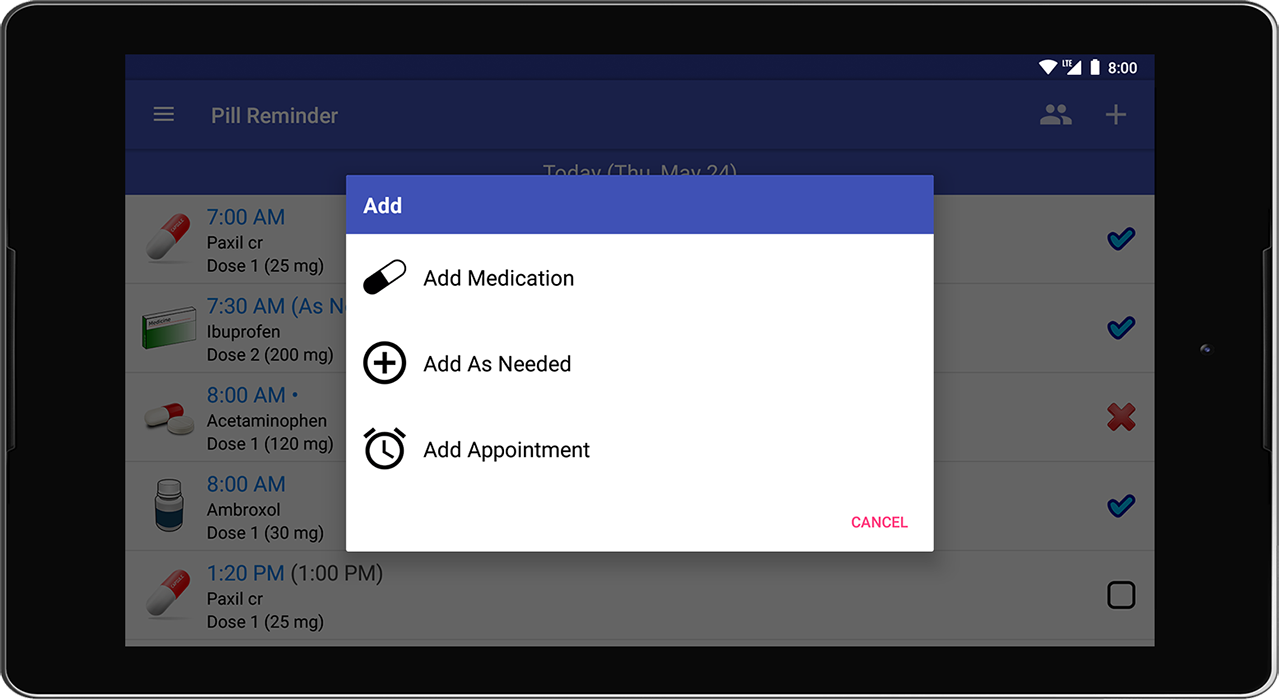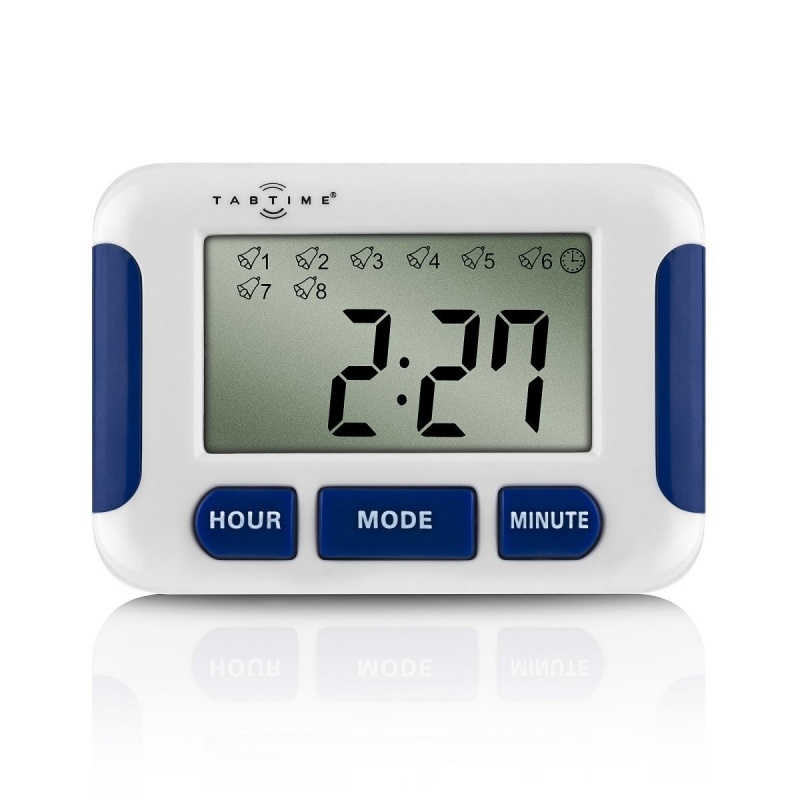

3, 25–30 (2013)Ĭhadwick-Dias, A., McNulty, M., Tullis, T.: Web usability and age: how design changes can improve performance.
#Pill reminder device android#
IEEE, Anchorage (2011)Īshwini, B., Sapna, K., Ishwan, B., Pallavi, P., Achaliya, P.N.: An Android based medication reminder system based on OCR using ANN. In: Proceedings of the International Conference on Systems, Man, and Cybernetics, pp. Mobile application developers should find the developed mobile phone based medication reminder application for older people with disabilities a useful example application, and it should help them in developing other mobile applications for older people with disabilities.Īsai, D., Orszulak, J., Myrick, R., Lee, C., Coughlin, J.F., deWeck, O.L.: Context-aware reminder system to support medication compliance. The novelty of the developed application is the use of a Cloud service to provide two-way communication in the form of feedback between the older patients with disabilities and the doctors so that the medication adherence of the patients can be monitored. In order to find a solution to this problem, a mobile phone and Cloud-based smart application has been developed to improve patient adherence, particularly for older people with disabilities. As a result of forgetfulness or other problems, many older patients either do not take the correct medicines or the correct dosage at the appropriate times and this reduces the benefits of treatments and increases both healthcare costs and the mortality rates. This seems to be a significant problem encountered by older people with disabilities. It is important that the medication prescribed by doctors is taken at the correct times of the day and in the correct dosages. Consequently, the rate of medication usage is increasing, particularly among the elderly.

16(2): 375–382.With the latest research in the fields of medicine and pharmaceutical sciences, an increasing number of drugs are being invented to cure many fatal diseases and this has enabled people to live healthier and longer. Real-time electronic adherence monitoring is feasible, comparable to unannounced pill counts, and acceptable. 1(1).Ģ Haberer JE, Robbins GK, Ybarra M, Monk A, Ragland K, Weiser SD et al. Using Technology to Improve Adherence to HIV Medications in Transitional Age Youth: Research Reviewed, Methods Tried, Lessons Learned. Viral suppression among youth increased from 53.3% (8/15) to 69.2% (9/13) for this intervention between July 2018 and December 2019.ġ Spratt ES, Papa CE, Mueller M, Patel S, Killeen T, Maher E et al. Patients expressed that they found the “day/time” indicator which showed when the bottle was last opened, to be more useful than using the alarm only. Seven patients reached viral suppression using the devices while two patients with the devices are currently out of care after they reached viral suppression. Mode of communication along with dates or frequency of check-in to monitor patients’ progress were established.
#Pill reminder device how to#
Clinic staff also showed the patients how to set the alarm to their preferred time and addressed any concerns or questions they had. Instructions were provided during clinic visits on how to use the device as well as the device features. These medication reminder devices (TimeCap) were provided to youth which were coupled with Gilead’s 2-minute “Help Stop the Virus” video as a treatment adherence teach-back tool. There is some evidence that shows that medication reminder devices improve HIV medication adherence and biomarker outcomes 1, 2 This e-pill bottle reminder intervention served as medication reminders among youth ages 13-24 years who were new to Crossroads North or who had ineffective medication routine.

Clinic purchased pill bottle reminder devices with no cost to patient.Pill bottle reminder alarms (e-pill) for youth patients new to the clinic and those with inconsistent medication routines, with the provision of clinic instructions on use of the e-pill devices and added support via an adherence video teach-back tool.


 0 kommentar(er)
0 kommentar(er)
